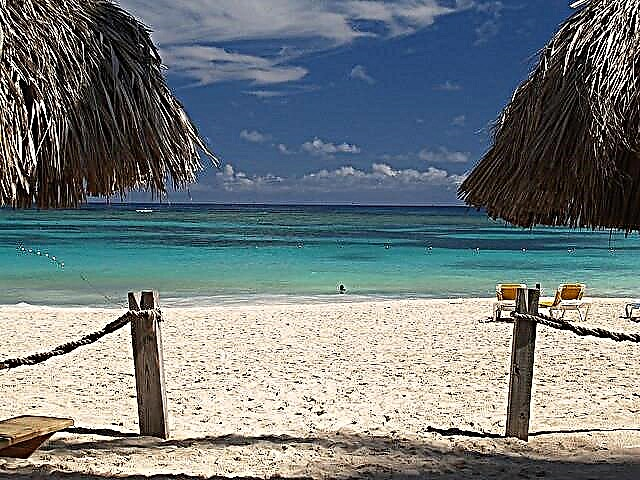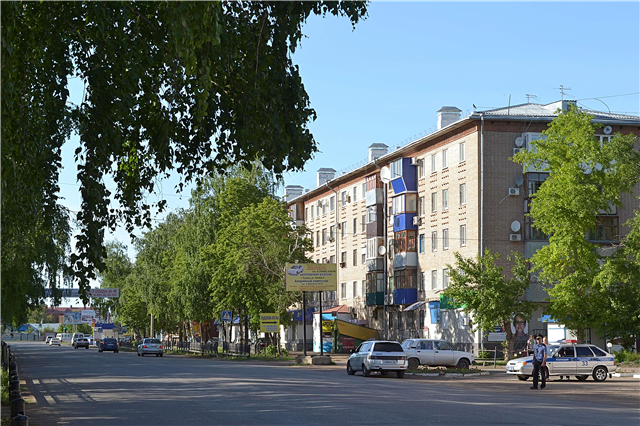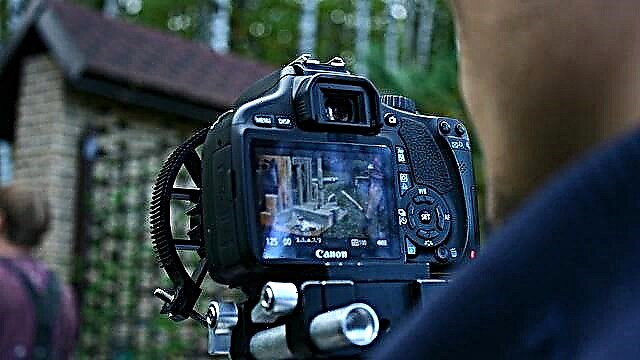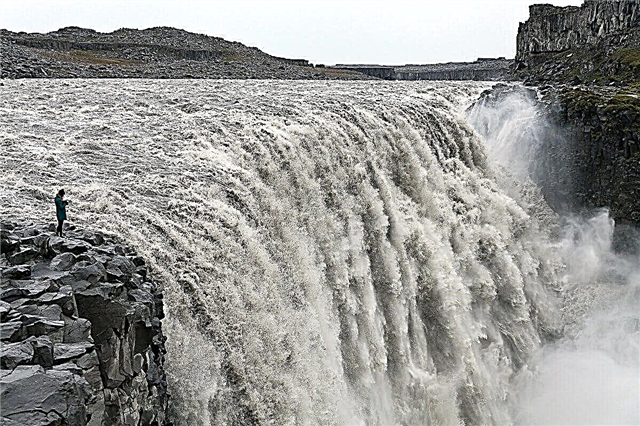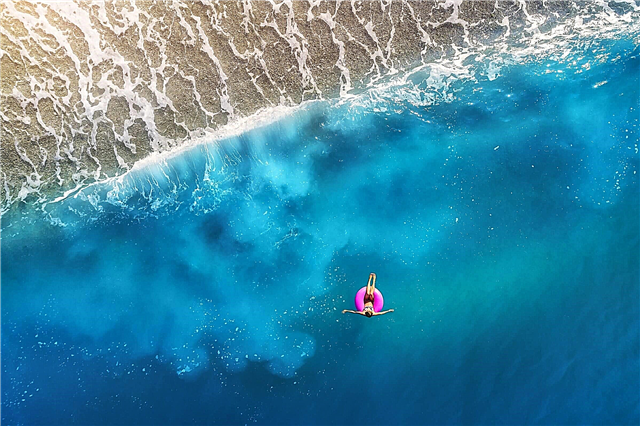Chelyabinsk is the metallurgical center of Russia. It was founded in 1736 to protect the southern borders of the Russian Empire, but soon became a major transport center. Its history was reflected in the periods of the Ural uprisings and the Great Patriotic War, during which many enterprises were transported to the city. The monuments are dedicated to the foundation of Chelyabinsk and the heroes of the Second World War.
The themes of the grandeur and picturesqueness of the Ural Mountains are also reflected in the monuments of Chelyabinsk. In the city, not only old monuments are being restored, but modern sculpture is also being developed. Many new memorials are regularly installed in Chelyabinsk. They organically fit into the architectural appearance of the city and become popular attractions.
Historical and modern monuments of Chelyabinsk
List of the most popular monuments and sculptures in the city.
Monument to the founders of Chelyabinsk
Chelyabinsk was founded in 1736. A fortress was laid on the banks of the Miass River, which became an important stronghold in the defense of the southern borders of the Russian Empire. The monument was erected on the site of the historical center of Chelyabinsk. A high stele is installed on a stone pedestal. On four sides of it are the figures of a Cossack, Bashkir, peasant and the founder of the city, officer Tevkelev. At the top of the stele there is a sculpture of the Archangel Michael.

"To the Valiant Sons of the Fatherland"
The monument is dedicated to the soldiers-internationalists who died in the year of military conflicts of the XX century. It is next to the "Eternal Flame". Two large granite stones are located close to each other and resemble a gorge. On the largest of them there is a bronze figure of an eagle, spreading its wings. The memorial is surrounded by a wreath symbolizing flames. The inscription is engraved on it: "To the valiant sons of the Fatherland."

"The Tale of the Urals"
The memorial composition has become one of the symbols of Chelyabinsk and the Urals as a whole. The sculpture was created based on the fairy tales of Pavel Bazhov and symbolizes the wealth, greatness and history of the Urals. The height of the monument is 12 meters. The stone pedestal is covered with boulders, and on top there is a giant with a blacksmith's hammer in his hand. On the verge of the pedestal there is an inscription: “Ural! The stronghold of the state, its earner and blacksmith. "

Memorial to the soldiers of law and order
The monument is located on the embankment of the Miass River, in the central part of Chelyabinsk. In the center of the composition there is a bronze figure of a lifeguard holding a small child by the hand. On either side of it are commemorative plaques made of white stone. The memorial was erected in 2013. It is dedicated to all employees of the Ministry of Internal Affairs who have died in the line of duty since 1918.

Monument to I. V. Kurchatov
The memorial was erected in 1986 and is dedicated to the 250th anniversary of the founding of Chelyabinsk. It is dedicated to the great Soviet nuclear physicist, Igor Kurchatov. In the center of the composition there is a stone figure of a physicist, about 6 meters high. Two pylons are installed behind it. Their height reaches 27 meters. On the inner side of each, half of a split atom is depicted.

Monument to V.I.Lenin
The monument is the main sculpture on Revolution Square in Chelyabinsk. A complex plinth, consisting of several steps and made of red granite, is installed on a small platform. The total height of the memorial is approximately 15 meters. The figure of Vladimir Lenin is cast in bronze. The sculpture depicts the leader of the revolution, looking into the distance, in a coat fluttering in the wind.

Monument to P.A.Stolypin
Pyotr Stolypin carried out a series of reforms that have become one of the most ambitious and significant in the history of Russia. He visited Chelyabinsk in 1910. The total height of the monument dedicated to the reformer is about 8.5 meters. In the center of the composition, on a stone pedestal, there is a sculpture of Stolypin, cast in bronze. He is wearing a traveling overcoat, and in his hands he holds sheets of paper with notes.

Monument to M. Glinka
The monument is located on the square next to the Chelyabinsk Opera and Ballet Theater. Its total height is 8 meters. A bronze sculpture of the great composer is installed on a stone pedestal. He is depicted standing in full growth and looking into the distance. On his left hand there is a sculpture of an accordion, and on his right he is leaning on a cello. The monument is dedicated to Glinka's outstanding contribution to the development of classical music.

Monument to S.S.Prokofiev
The monument to the famous composer is located in the center of Chelyabinsk, next to the Sergei Prokofiev Concert Hall. The memorial was created in bronze and installed in 2000. The sculpture depicts Prokofiev sitting in an armchair. He pensively examines the notes and notes in the music book, which he holds with his left hand. The composer's right hand rests his head bent over the notes.

Monument-mausoleum to V. Lenin
The mausoleum is located in the "Scarlet Pole", one of the main parks in Chelyabinsk. The monument is a two-story building with a bust of Vladimir Lenin on the second floor. The mausoleum is made in the Egyptian style with oriental motives. Nearby there is a memorial plaque made of white stone. Construction began in 1924, at the same time as the construction of Lenin's mausoleum in Moscow.

Monument to volunteer tankers
The monument is located on the territory of the memorial complex "Boulevard of Glory" and was opened in 1975. It is dedicated to the military exploits of Soviet tank crews committed during the Great Patriotic War. In 1943, the Ural Volunteer Tank Complex was formed from the volunteers of the Urals. There is a figure of a tankman on a stone pedestal. The sculpture depicts a soldier leaning on a tank turret.

"Monument of Glory"
The monument was erected in 1975 to commemorate the 30th anniversary of the victory in the Great Patriotic War. There is a memorial stele in the center of the memorial complex. An image of a Soviet soldier is carved on it, and the inscription "1941-1945" is engraved under it. An eternal flame is installed next to the stele. A memorial obelisk is located next to it. Its height is about 26 meters.

Monument to the student
The monument is located next to the South Ural State University. On a small pedestal there is a sculpture depicting a student in an unbuttoned jacket. The monument is one of the oldest in Chelyabinsk. The monument has retained its popularity among students for many years. According to local superstition, rubbing the record book against the statue will make the session a success.

"Eaglet"
The monument is located in the Aloe Field Park, next to many other monuments dedicated to the Great Patriotic War. The 40th anniversary of the Komsomol became a solemn occasion. On a stone pedestal, there is a sculpture depicting a boy in an adult soldier's uniform. The memorial is dedicated to children who took part in hostilities during the Great Patriotic War.

"Grieving mothers"
The memorial is located on the territory of the "Memory" complex, where a number of brotherly graves are located. The monument was opened in honor of the 30th anniversary of the end of the Great Patriotic War. The sculpture depicts two women holding hands. They symbolize the wives and mothers of the fallen soldiers. Together they hold a helmet, which is directed their wistful and sad gazes.

Monument to A. Pushkin
1937 marked the 100th anniversary of the death of the great Russian poet. In honor of the anniversary, the city park of Chelyabinsk was renamed in honor of Alexander Pushkin, and a bust of the poet was installed in the center of the park. The modern monument was opened in 1983. The bronze sculpture depicts Pushkin in a shirt, holding a feather in one hand. The monument to the great poet became the venue for readings and other literary events.

"Bench by Tatiana Larina"
Not far from the bust of Pushkin there is a gazebo dedicated to one of the heroines of Eugene Onegin, Tatiana Larina. The gazebo is made of white stone, and inside it is a Onegin bench. There is a sculpture by Tatyana Larina on it. She rests her hand on a bench, and next to it is a scroll with a passage from Onegin. The gazebo is extremely popular among tourists and city residents.

"On a new path"
In 1986, Chelyabinsk celebrated its 250th anniversary. It was the anniversary that became the solemn occasion for the opening of the monument. It is located near the Chelyabinsk railway station and is dedicated to the railway workers who participated in the February Revolution of 1905. A sculpture depicting a railway worker is installed on the pedestal. With one hand, he translates the directional arrow, and with the other he holds the banner.

Stele "Defenders of the Fatherland"
One of the highest monuments in Chelyabinsk was installed in 1975. It is located in the Victory Garden and is dedicated to the workers of the Chelyabinsk Tractor Plant who died in battles during the Great Patriotic War. At the base of the monument is a stone cube with images of tanks and a Red Army soldier. The stele rises 36 meters above the pedestal. There is a memorial plaque next to it.

"Kind Angel of the World"
One of the newest monuments in Chelyabinsk was opened in 2008. On a stone column, 10 meters high, there is a figure of a golden angel. He stands on a hemisphere that represents the Earth. The angel holds a dove in his hands, symbolizing peace, goodness and hope. In total, 27 such sculptures have been created in the world. The monument is one of the highest and most conspicuous in Chelyabinsk.

Steam locomotive ES-350 "Krasny Kommunar"
The monument train is located in the Pushkin Garden, next to the Railway Workers' Palace of Culture. The steam locomotive has a rich history. It was this train that was sent to Moscow in 1920 with a large load of bread. He got from Chelyabinsk to Moscow in 4 days, setting a speed record. The locomotive managed to save many Moscow residents from hunger during the difficult revolutionary years, for which it was erected as a monument.

Monument-tank "Victory"
The memorial is located on Komsomolskaya Square, in the central part of Chelyabinsk. The monument is dedicated to the victory in the Great Patriotic War and the industry of the Urals, which produced thousands of units of military equipment during the Great Patriotic War. The IS-3 tank is located on a high stone pedestal. It was created at the Chelyabinsk Tractor Plant. The tank was released in May 1945, but did not have time to take part in the battles.

"Bow to you, sister"
One of the few monuments dedicated to women who participated in the Great Patriotic War, in particular, to nurses, is installed on Pobedy Avenue. It was opened in honor of the 60th anniversary of the victory in the Great Patriotic War, in 2005. The sculpture depicts a girl in military uniform sitting on a bench. Flowers lie on her knees, and behind her there is a sign with the inscription: "Bow to you, sister."

Monument to S.M. Zwilling
Samuil Moiseevich Zwilling was one of the most active Bolshevik revolutionaries in the Urals. In 1917-1918, he led the actions of the revolutionary forces in Chelyabinsk and the surrounding regions. The bust of Zwilling is set on a high stone pedestal. Strong and strong-willed traits are visible in the face of the revolutionary. A commemorative inscription is engraved on one of the edges of the pedestal.

Monument to the dog named Belyash
For two years in a row, the dog came to the tram stop waiting for the owner, who died in a car accident. Soon the local residents began to feed the dog, and he received the nickname "Belyash". Later Belyash began to be called "Chelyabinsk Hachiko", for the similarity of the incident with the plot of the famous film. The dog was hit by a car 2 years after the death of the owner.

"Lefty"
The collective image of the Ural masters was expressed in the hero of Nikolai Leskov's story, Levsha. According to the plot, he managed to shoe a flea, surpassing the English masters. The monument to Lefty was erected in 2004. The master sits at a work table with his left hand thrown over his head. On his right, he holds a magnifying glass through which a shod flea is seen sitting on a table.

"Baba Yaga"
The monument to the fairy-tale character is erected next to the Chelyabinsk puppet theater. The figure of Baba Yaga was cast in bronze and installed in 2018. The sculpture depicts a fairytale heroine sitting on a bench and smiling broadly. Like many new monuments, the figure of Baba Yaga quickly became a popular city landmark. There is a place on the bench next to the sculpture where you can take a commemorative photo.

"Black Tulip"
The monument is dedicated to the Russian bard, Alexander Rosenbaum, who wrote the song "Black Tulip". It was dedicated to Soviet soldiers who fought in Afghanistan and became one of the most famous in the work of the singer. The bronze sculpture depicts Rosenbaum sitting on a stone with a guitar in his hands. Nearby is an incomplete glass of vodka covered with a piece of bread. To the right of Rosenbaum is a stone with carved words of the song.

"Zero verst"
Throughout its history, Chelyabinsk has been the most important transport hub. On one of the central streets of the city, there is a pillar that marks the starting point of the length of all roads in the region. Its height is about 3 meters. Above, there is a gold-colored hemisphere with a two-headed eagle on it. A little lower on the pillar there is a plate with the image of a camel. It symbolizes the importance of Chelyabinsk as a transport hub.

"Artist"
The sculpture depicts an old artist standing with an easel in the middle of the street. He is dressed in 19th century fashion. A beret is worn on the man's head, and a scarf is wrapped around his neck. The artist's gaze is fixed on passers-by, and in his left hand he holds a palette. There is a bronze easel next to the sculpture. Instead of a canvas, there is a mirror on it. It reflects the street and passers-by.

"Walker with a dog"
The monument is located next to the Legislative Assembly of the Chelyabinsk Region. The sculpture depicts a peasant from the 18th-19th centuries reading a newly issued decree. In front of him, on a low pedestal, is a bronze book, open to the pages with the new law. A yard dog lies at the feet of the peasant. She closely watches the person reading the decree.

"Boy with Camels"
One of the symbols of trade and transport routes, the camel, is depicted on the emblem of Chelyabinsk. It is to him that one of the newest monuments of the city is dedicated. The bronze sculpture depicts a boy sitting on a carpet. A bird is sitting on his hand, and two camels are standing nearby. The little bird has become the city's mascot. Residents and guests of Chelyabinsk believe that those who rub it will be lucky.

"Fashionista"
The monument is located on one of the central streets of Chelyabinsk. Locals also call it “Coquette”. The sculpture depicts a girl wearing a dress and a hat. She holds an umbrella in her hands. In front of the girl there is a mirror in which she looks at herself and flaunts. The monument is a popular attraction in Chelyabinsk. Tourists and townspeople are often photographed with "Fashionista".

"Beggar"
The monument is located near the entrance to one of the largest banks in Chelyabinsk. The sculpture is made of bronze and depicts a beggar with his bare feet tucked under him and holding a cap for money. Among residents of Chelyabinsk and guests of the city, there is a belief about the monument. According to him, luck will accompany the one who puts money in the beggar's cap and pats him on the head.

"Glory to the brave"
The copper monument on a stone pedestal was erected in 1983. It is dedicated to rescuers and firefighters who died in the line of duty. The sculpture depicts a firefighter. In his arms, he carries a small child out of the fire. Flames rise behind him, and a commemorative inscription is engraved on the pedestal: "Glory to the brave."




